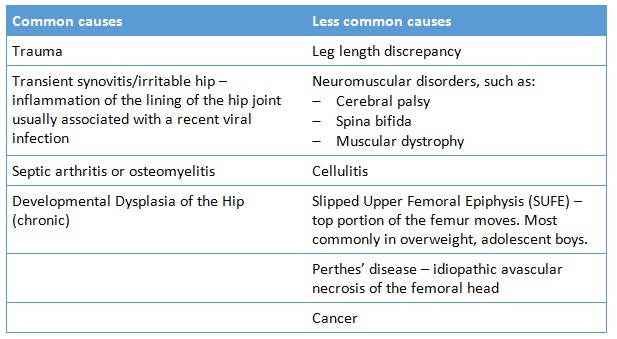Limp is quite a common presentation in children and may be best considered in two groups, 1- 5 years and >5 years. Any limp in a child aged 1-5 without an obvious rapidly reversible cause (such as poorly fitting shoes) requires further assessment.
The list below is not all encompassing; there are case reports of meningitis presenting with limp or, as in the attached article, cerebral abscess. However, a robust approach to assessment should ensure that no significant pathology is missed.
Important history points:
- Take the history from the child if they are old enough.
- Establish the time of onset – is it acute or chronic?
- Is there a witnessed episode of trauma? Is the account consistent with the child and the injury?
- Is there recent or intercurrent illness? Any temperature?
Examination:
- Evidence of Trauma – localised pain or swelling, reduced range of motion.
- Evidence of infection – fever, pain, erythema, swelling
- Evidence of NAI – other injuries inappropriate to age and presentation, overall demeanour of child, interaction with family, family background
- Evidence of malignancy – pallor, unexplained bruising, organomegally

